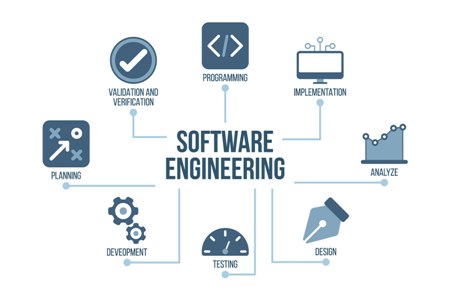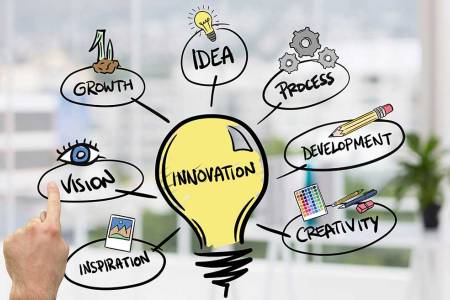
Applied Software Engineering
While most Information Systems and Computer Science courses traditionally deal with the development of new systems, in practice developers spend the largest part of their time in software life-cycle activities that follow the development phase. The objective of the course is to allow students to read and understand a system’s software elements (code, structure, architecture). Having followed this course, students should be able to intelligently decide on how existing systems will be maintained, setup design and evolution strategies for legacy code, and prescribe the use of refactoring for dealing with architectural mismatches and low-quality code. An innovative aspect of the course involves the use of Open Source Software (OSS) in course examples and exercises. Through the study of OSS students will be able to see how non-trivial applications like the Apache Web server, the Postgres Relational Database Management System, the Jakarta Java servlet container and the Cocoon framework are structured.

Production & Operations Management
The aim of the course is to introduce the student to the design, analysis, reengineering, optimisation and functional control of Manufacturing and Service operations, and to highlight the need for effective management of the constrained resources of operations systems. Through the course, the student will understand the organizational structure and the various components and functions of a Production or Service Operations System. They will practice basic analysis and problem-solving methods that are used by all kinds of organizations to understand and optimize operations.
The topics of the course cover the major business processes inherent in the operation systems, starting from operations strategy – showing the bigger picture of operations in a transforming global economy. Then the course delves into product, service and process design, forecasting, facility location and layout, procurement and inventory management, operations scheduling, and, finally, quality control. In summary, the course provides: a) an introductory overview of the major areas of operations management, b) an understanding of the practical and theoretical problems encountered in operations, and, c) practice of tools and techniques for effective operations management emphasizing both qualitative reflection and quantitative methods.
Course contents
The topics included within the scope of Production and Operations Management (POM) are numerous and diverse. The following list provides the areas that will be covered within the course including recommended readings, which are available to the students through the AUEB Library and e-Library.
- Introduction – Definitions: Course content and structure, Context and definitions of POM
- Operations Strategy and Lean Production: The strategic framework, Illustration and deployment of operations strategies, "New" operations strategies – Agile Operations
- Product, Service and Process Design and Development: Key concepts in product and service design, The product development process and project, Classifications of production process structures (product and process).
- Facility Location: Factors affection location decisions, Locating a single facility
- Facility Layout: Layout types and performance, Product and process layout designs - models/algorithms, Application exercises in class
- Capacity Planning: Capacity strategies and tools, Basic forecasting methods, Application exercises in class
- Forecasting: Basic forecasting methods, Application exercises in class
- Inventory Management - The Beer Game: Business game in class where students are practically familiarized with the problems of inventory control and management.
- Inventory Management I: Deterministic models: Economic Order Quantity, Materials Requirements Planning (MRP), Application exercises in class
- Inventory Management II: Just-In-Time – KANBAN, Integrated exercise: Determining inventory strategy
- Quality Management: Overview and introduction to Quality Management, Fundamental definitions
- Quality Control and Total Quality Management – TQM: Basics of Statistic Process Control (SPC), Application exercises in class

Information Resource Management
Brief course description
This is an advanced course on the management of information systems in organizations. Some prior understanding of Management of Information Systems is strongly recommended.
The main axes of the course:
- The strategic role of IT in contemporary business
- Strategic planning for information resources and systems
- The business role of IT as a tool for supporting and promoting business functions and management
- Broader organizational and social aspects related to the use of IT in contemporary business
This course is worth 6 ECTS points.

Innovation in Organizations: Knowledge, Creativity and the Processes of Innovation
Innovation in itself is central to the course. Various forms of innovation that can be pursued by organizations will be explained, and the students will develop frameworks for analyzing how different organizational structures, processes and management methods can be used for implementing and managing innovation. The course aims at opening up the black box of innovation and equipping the students with concepts and frameworks that will help them to apprehend and better manage innovation.
Course Contents
Introduction to the Course (Session 1)
- Structure and Requirements,
- Overview of the three subject topics – Innovation, Creativity and Knowledge
Innovation (Sessions 2-3 & 5 & 7)
- What is innovation and where does it happen? Definitions, Terminology, Types and Forms of Innovation,
- Determinants of Creativity and Innovation,
- Insights from Innovation Leaders. Open Innovation,
- Drivers for innovation,
- Innovation management frameworks, the new product and service development process, brining innovation to the market,
- Opportunities for Innovation: Ten Types of Innovation
- Overview of creativity as a concept – Core elements, Myths & Truths,
- The language of knowledge.
Further on Creativity (Session 8)
- Creative Strategizing - Strategic management frameworks and their relation to creativity and innovation,
- Creativity Tools - Developing the creative potential of human resources,
- Blockages to innovation and creativity.
Knowledge (Sessions 9-10)
- Forms of organizational knowledge,
- The Knowledge Effect – Valuing Intellectual Capital,
- Knowledge Management – What and How,
- Tools for Knowledge Management.
Final Presentations (Sessions 11-12)

Management of Information Systems
This course aims to introduce to the student the essential dimensions related to the management of Information technology and Systems in modern organisations. Related topics include the pervasive role of ICTS in the economy and in organisations, IS planning and strategy, Types of IS used currently in organisations, E-business, E-commerce, Knowledge Management and e-learning, approaches for developing Information Systems, Outsourcing, the organisation and the business roles of the IS function, IS evaluation and the economics of ICT.
Course Content
The course largely follows the chapter structure of the book provided as essential reading (Turban et al).

Managerial Decision Making
Decision-Making is one of the most important functions of management. Today’s business environment is characterized by high competition, constant changes, extensive globalization, large availability of data and information, and the huge penetration of information and telecommunications technology. In this environment, decision making is increasingly based on the use and analysis of data, through the development of “models”, and the use of user-friendly, PC-based computer packages.
On completion of this course, students should be able to: to understand and formulate decision making problems, and to use the computer technology efficiently in order to make the best decision
Course Content
- The Fundamentals of Operations Research: Introduction to management Science; The methodology of Decision Making; Models in Managerial Decision Making
- Linear Programming (LP): Introduction; Characteristics of LP Problems; Graphical solution of a LP problems; A Maximization Problem; a Minimization Problems; Problems General Formulation and Assumptions of LP problems
- Sensitivity analysis in Linear Programming: Dual Prices in LP; Reduced costs in LP; Changes in the Objective Function’s Coefficients; Changes in the Right Hand Sides (RHS) of the Constraints; Evaluation of a New Activity
- Using Solver to Solve Linear Programming Problems: Introducing the model in Excel; Solving the Problem; Understanding and Analyzing the Solution – SOLVER Reports.
- Integer Programming (IP): Introduction; Formulating IP Problems with Binary Variables; Formulating IP Problems; Solving IP problems; Solving Integer Programming Problems with SOLVER.
- Implementing Management Science in Practice: Marketing and Sales problems; Production and Inventory problems; Networks and Transportation problems; Logistics and Supply Chain problems; Investments problems; Human Resources problems.
- Decision Analysis: Introduction; Criteria for Making Decision under Uncertainly; The Expected Value of Perfect Information; Decision Tree; Calculating the Risk Profile a Strategy; Sensitivity Analysis; Using Precision Tree to Solve Decision Analysis Problems.
- Simulation: Introduction; Implementation of Simulation under Conditions of Uncertainty
- Using Excel and @Risk in Simulation: Introduction; Simulation of Queuing Systems; Simulation of an Inventory System; Analysis of Simulation Results.

Modern Enterprise Information Systems
Enterprise Information Systems (EIS) are coherent and integrated software applications that can support a large variety of operational processes and business functions and a focal monitoring, control and coordination tool for all operations that take place in the headquarters and the distinct remote locations of modern enterprises. Via advanced database and communication technologies and sound coverage of diverse business functions, EIS achieve data centralization, integration of business software applications and business process redesign, all in the quest for process optimization, productivity enhancements and gaining of competitive advantage through innovative information technology. For the successful enterprises and organizations within the Information and Knowledge Society, EIS are the backbone transactional information platforms that allow quick response to the challenges emanating from the continuously evolving business landscape. Within the course the following areas related to EIS will be addressed:
- Introduction to EIS (What exactly are they?)
- Architecture and underlying technologies of EIS
- Business functions addressed by modern EIS
- The EIS advantage for large enterprises and SMEs
- Critical success factors for EIS implementation projects
- Methodologies for effective selection and implementation of EIS
- Demos of standard EIS functionality
- Case studies illustrating EIS implementations from Greece and abroad